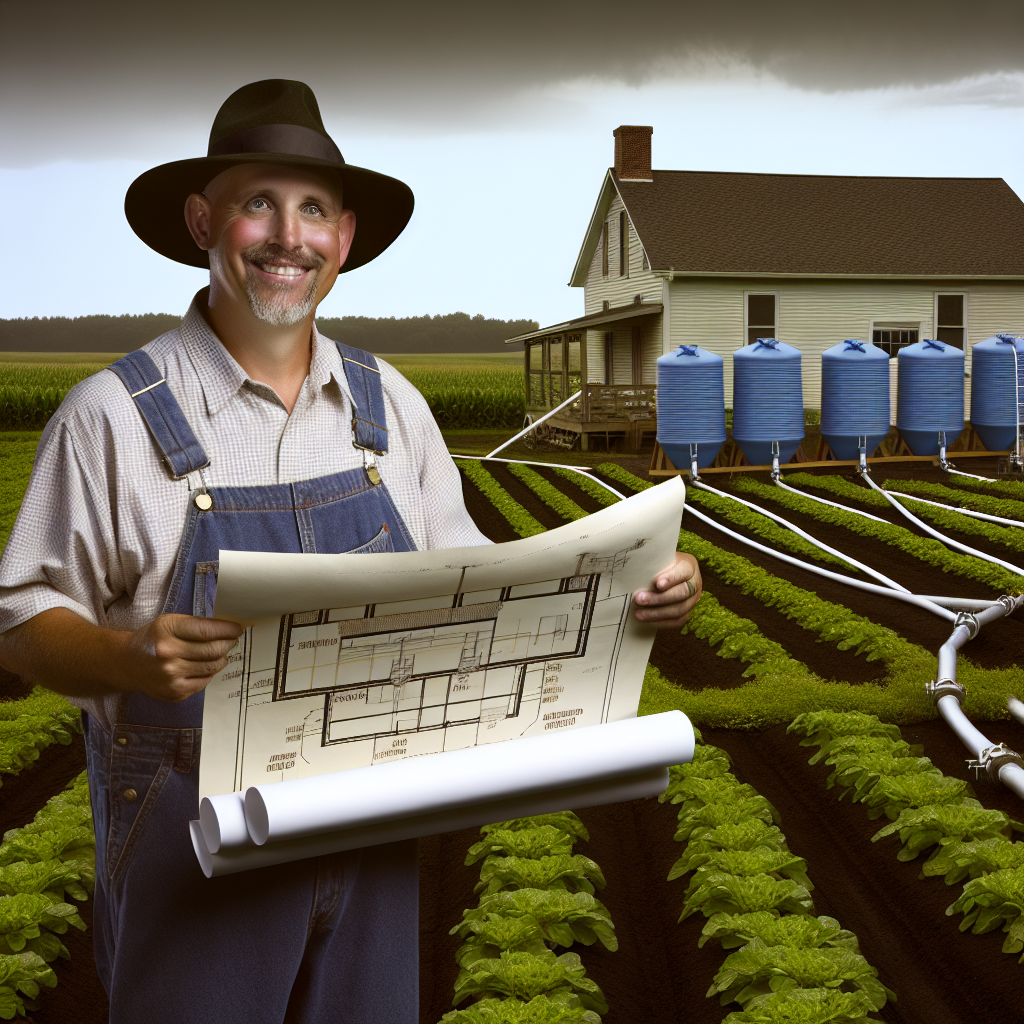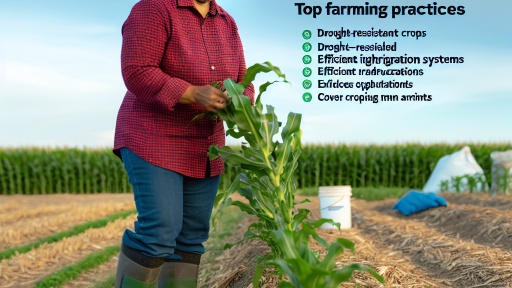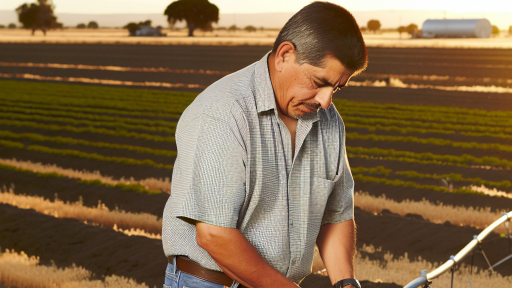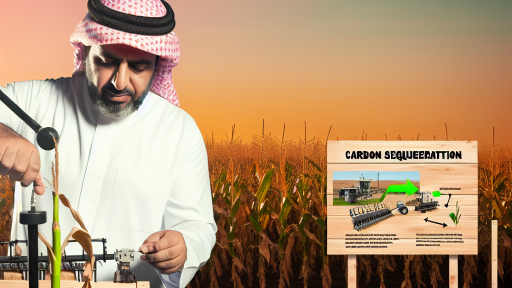Introduction to Rainwater Harvesting
Importance of Rainwater Harvesting
Rainwater harvesting plays a crucial role in sustainable agriculture.
This practice conserves water and reduces dependency on groundwater.
Farmers can utilize collected rainwater for irrigation purposes.
Moreover, it helps manage stormwater and mitigate flooding risks.
By capturing rainwater, farms enhance their resilience to droughts.
Benefits of Rainwater Harvesting
Implementing rainwater harvesting systems offers numerous advantages.
First, it reduces water costs for farmers.
Second, it provides an alternative water source during shortages.
Additionally, it decreases the impact of agricultural runoff on local water bodies.
Ultimately, these systems promote sustainable farming practices.
Farmers who harvest rainwater often see improved crop yields.
Finally, it fosters community awareness about conservation efforts.
Overview of Rainwater Harvesting Systems
Defining Rainwater Harvesting
Rainwater harvesting involves collecting and storing rainwater for various uses.
This practice conserves water and reduces reliance on traditional sources.
Moreover, it helps manage stormwater and alleviate flooding.
Transform Your Agribusiness
Unlock your farm's potential with expert advice tailored to your needs. Get actionable steps that drive real results.
Get StartedTypes of Rainwater Harvesting Systems
There are mainly two types of rainwater harvesting systems.
They are: rooftop collection systems and surface runoff systems.
Rooftop Collection Systems
Rooftop collection systems gather rainwater from building roofs.
This method is efficient for residential and commercial properties.
Downspouts direct the collected water into storage tanks.
Surface Runoff Systems
Surface runoff systems capture rainwater from open surfaces.
This approach is suitable for larger areas, like farms.
It requires appropriate grading and drainage to channel water.
Key Components of Rainwater Harvesting Systems
Several key components make up an effective rainwater harvesting system.
- Catchment area collects rainwater.
- Conveyance system transports water to storage.
- Storage system holds the collected rainwater.
- Filtration and treatment systems improve water quality.
Catchment Area
The catchment area evaluates the efficiency of rainwater collection.
Materials like metal roofs are ideal for this purpose.
Conveyance System
The conveyance system channels collected water.
It includes downspouts, gutters, and pipes.
Storage System
Storage tanks hold harvested rainwater for later use.
These tanks can be above or below ground.
Filtration and Treatment Systems
Filtration systems ensure the collected water is clean.
Treatment options may include UV light or chemical treatments.
Benefits of Rainwater Harvesting
Implementing rainwater harvesting offers multiple benefits.
- It conserves potable water resources.
- It reduces runoff and soil erosion.
- Furthermore, it lowers water bills for users.
Challenges in Rainwater Harvesting Implementation
Despite its advantages, challenges exist in implementation.
Initial costs and maintenance can be barriers.
Additionally, local regulations may complicate installation.
Designing a Rainwater Harvesting System for Modern Farms
Assessing Water Needs
Begin by analyzing the water requirements of your farm.
Consider the crops and livestock involved in your production system.
This assessment helps determine the capacity of your collection system.
Showcase Your Farming Business
Publish your professional farming services profile on our blog for a one-time fee of $200 and reach a dedicated audience of farmers and agribusiness owners.
Publish Your ProfileMoreover, evaluate seasonal variations in water consumption.
Planning the Collection System
Select appropriate surfaces for collection, such as roofs of barns or greenhouses.
Ensure these surfaces are clean and free from contaminants.
Include gutters and downspouts to direct water into storage tanks.
Additionally, design the layout to maximize water capture during rainfall.
Selecting Storage Solutions
Choose tanks based on your estimated water requirements and space available.
Consider materials like plastic, fiberglass, or concrete for durability.
Install multiple smaller tanks for flexibility and ease of access.
Furthermore, ensure tanks have proper covers to prevent evaporation.
Implementing Filtration Systems
Integrate filters to remove debris before water enters storage tanks.
Utilize first-flush diverters to discard initial run-off containing contaminants.
Regularly maintain filters to ensure efficient operation.
Additionally, consider UV or carbon filtration for enhancing water quality.
Developing a Distribution Network
Design a pipeline system to distribute water evenly across your farm.
Utilize pumps to move water to areas with higher elevation.
Incorporate drip irrigation to maximize water efficiency.
Moreover, monitor water distribution regularly to prevent waste.
Monitoring and Maintenance
Establish simple procedures for regular system inspections.
Check for leaks, clogs, and other potential issues frequently.
Document water levels and usage to track system performance.
Additionally, educate staff on proper system maintenance practices.
See Related Content: Farmers’ Climate Change Adaptation Cheat Sheet
Best Practices for Collecting and Storing Rainwater
Understanding Rainwater Harvesting
Rainwater harvesting captures runoff from roofs and surfaces.
This method helps conserve water for agricultural use.
Farmers can enhance sustainability through effective collection strategies.
Choosing the Right Collection System
Select a collection system that fits your farm’s size and needs.
Consider factors such as surface area and rainfall patterns.
Gutters and downspouts should efficiently channel water into storage tanks.
Storing Rainwater Properly
Use water storage tanks made from durable materials.
Polyethylene and fiberglass are excellent choices for tanks.
Ensure tanks are opaque to prevent algae growth.
Maintaining Water Quality
Regularly clean gutters and downspouts to remove debris.
Install leaf guards to minimize contaminants entering your system.
Use a first flush diverter to separate initial runoff from clean water.
Implementing Efficient Distribution Systems
Connect a distribution system to provide water to crops effectively.
Drip irrigation systems promote water use efficiency and reduce waste.
Additionally, use hoses or gravity-fed systems when possible.
Incorporating Rainwater Harvesting into Farm Practices
Integrate rainwater harvesting with your overall farming strategy.
This approach enhances water security during dry spells.
Moreover, it supports sustainable practices and maximizes resources.
Showcase Your Farming Business
Publish your professional farming services profile on our blog for a one-time fee of $200 and reach a dedicated audience of farmers and agribusiness owners.
Publish Your ProfileDelve into the Subject: Integrated Water Management Practices for Farmers
Integrating Rainwater Harvesting with Sustainable Agricultural Practices
Importance of Rainwater Harvesting
Rainwater harvesting reduces reliance on conventional water sources.
It enhances water availability during dry seasons.
This method also decreases soil erosion and runoff.
Furthermore, it helps store excess rainfall for later use.
Implementing Rainwater Harvesting Techniques
Farmers can utilize various techniques for effective rainwater harvesting.
For example, storage tanks and cisterns capture rainwater from rooftops.
Swales can help direct water flow within fields.
Additionally, contour farming promotes water infiltration into the soil.
Building Construction for Harnessing Rainwater
Constructing buildings with rainwater collection systems is beneficial.
Design roofs to slope towards rainwater collection points.
Integrate filtration systems to ensure water quality.
Land Management Techniques
Implementing cover crops improves soil structure and moisture retention.
Moreover, mulching helps reduce evaporation from the soil.
Incorporate agroforestry to maximize water use efficiency.
Collaborating with Local Communities
Community engagement enhances the success of rainwater harvesting projects.
Farmers can share knowledge and resources with neighboring farms.
Workshops can educate the community on water management practices.
Evaluating and Monitoring Outcomes
Regular monitoring ensures efficiency and sustainability of rainwater systems.
Collect data on water savings and crop yield improvements.
This information aids in making informed adjustments to practices.
Consequently, continuous improvement leads to better resource management.
Find Out More: Innovative Solutions for Farmers Facing Climate Risks

Legal Considerations and Regulations for Rainwater Harvesting
Understanding Local Laws
Each region has specific laws concerning rainwater harvesting.
Farmers must familiarize themselves with local regulations.
This knowledge helps in compliance and effective water management.
Permitting Requirements
Some regions require permits for rainwater collection systems.
Farmers should communicate with local authorities for guidance.
Permitting processes vary significantly from one area to another.
Health and Safety Standards
Health standards govern the use of harvested rainwater.
Ensure that collected water meets safety guidelines for agricultural use.
Testing water quality is crucial before utilizing it on crops.
Liability Issues
Understanding liability is essential when implementing harvesting systems.
Farmers should consider potential risks associated with accumulated water.
Insurance coverage can mitigate financial risks related to rainwater systems.
Incentives and Grants
Many jurisdictions offer incentives for sustainable water practices.
Farmers should research available grants for rainwater harvesting projects.
These incentives can significantly reduce initial setup costs.
Documenting Rainwater Usage
Proper documentation of rainwater usage supports compliance efforts.
Farmers should keep records of collected volumes and usage details.
Showcase Your Farming Business
Publish your professional farming services profile on our blog for a one-time fee of $200 and reach a dedicated audience of farmers and agribusiness owners.
Publish Your ProfileThis data may be vital during inspections or audits.
Adapting to Changing Regulations
Regulations regarding water rights often evolve over time.
Farmers must stay informed about legislative changes impacting water use.
Participating in local agricultural forums can enhance awareness.
Delve into the Subject: Climate-Smart Practices to Reduce Flood Impact on Farms
Case Studies of Successful Rainwater Harvesting Implementations in Agriculture
Innovative Approaches in California
Agricultural Enterprises utilizes rainwater harvesting effectively.
The company captures rainwater through rooftop catchment systems.
They store the water in large cisterns for later use.
As a result, they significantly reduce reliance on municipal water sources.
Moreover, this practice enhances water efficiency in crop irrigation.
Community Initiatives in India
In Rajasthan, farmers adopt rainwater harvesting techniques.
These farmers construct check dams to collect surface runoff.
They also build recharge wells for groundwater replenishment.
This community-driven project has improved irrigation reliability.
Furthermore, it has boosted local food production and farmer incomes.
Commercial Success in Australia
Agricultural Innovators, a farm in New South Wales, demonstrates effective rainwater use.
They install multi-purpose water tanks across their property.
This setup captures rainwater for both livestock and crops.
The approach has led to healthier animals and higher crop yields.
It also enhances the farm’s sustainability and resilience to drought.
Small-Scale Solutions in Brazil
In the Amazon region, smallholder farmers implement simple rainwater harvesting systems.
They use barrels and basic filtering to store rainwater.
This solution provides water for essential farming activities.
By capturing rainwater, they reduce stress on local streams.
This strategy encourages biodiversity and promotes sustainable practices.
Scalable Techniques in Africa
Several projects in Kenya showcase scalable rainwater harvesting methods.
Farmers employ earth dams and rooftop collection systems.
These methods effectively capture and store rainwater during rainy seasons.
The saved water supports agriculture during dry periods.
This initiative has increased crop resilience and food security significantly.
Future Trends in Rainwater Harvesting Technologies for Farming
Smart Water Management Systems
Smart water management systems are revolutionizing rainwater harvesting on farms.
Farmers can now use sensors to monitor rainfall and soil moisture.
These sensors help optimize water usage in crops effectively.
Furthermore, automation reduces labor costs significantly.
Integration with Precision Agriculture
The integration of rainwater harvesting with precision agriculture is gaining popularity.
This approach enhances resource efficiency and crop yields.
Precision technology allows farmers to apply water only when needed.
As a result, this minimizes waste and conserves water resources.
Filtration and Treatment Technologies
Advanced filtration and treatment technologies improve rainwater quality for irrigation.
Modern systems ensure that harvested rainwater meets agricultural standards.
Showcase Your Farming Business
Publish your professional farming services profile on our blog for a one-time fee of $200 and reach a dedicated audience of farmers and agribusiness owners.
Publish Your ProfileThese processes remove contaminants and sediment effectively.
This increases the safety of using harvested rainwater in food production.
Community-Based Rainwater Harvesting Projects
Community-based projects are emerging as a sustainable trend in farming.
Farmers can collaborate to build larger rainwater capture systems.
Such initiatives often receive support from local governments and NGOs.
Additionally, sharing resources strengthens community bonds.
Innovative Storage Solutions
Innovative storage solutions for rainwater are becoming essential.
New materials and designs enhance storage capacity and durability.
Moreover, these solutions minimize evaporation losses.
Farmers can thus store more water for dry seasons.
Policy Support and Initiatives
Governments are implementing policies to encourage rainwater harvesting.
These policies often include financial incentives for farmers.
Such initiatives promote sustainable agricultural practices.
Moreover, they aim to improve overall water resource management.
Additional Resources
Building Resilience in Jamaica’s Farming Communities: Insights …




